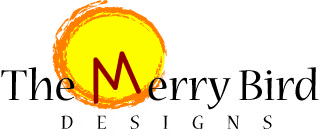http://en.wikipedia.org/wiki/Print_on_demand
POD a Definition
How many authors like the option of POD or Print on Demand
today? According to “The Economist” in February of 2010:
“About 6% of books in America
are now printed on toner-based or inkjet machines—a rough proxy for
print-on-demand (POD)—as opposed to on offset presses, estimates InterQuest, a
market-research firm. Over the next five years, it predicts, this figure will
increase to 15%. In 2008, the latest year for which data are available, about
285,000 titles were printed on demand or in short runs—132% more than in 2007
and for the first time more than in the conventional way. Amazon, the world's
biggest online bookseller, uses POD machines, although it does not reveal how
often.”
With all of us saving the trees, the atmosphere and time, a
POD option is a novel idea! (no pun intended) As more people turn to their e-readers for
book purchase, the POD option is equally tantalizing for those that like to
have a book “in hand”, to turn actual pages. For authors this is a great way to
control printing costs. With POD, purchases can be “on call for print”. A customer online can simply click purchase (ie
AMAZON) and the printing process begins for the book they have chosen. For the
Author this means the novel sits on a computer server until someone clicks
purchase. Now books are printed on
demand. There is no “out of stock” or two week waits for replenishment. But just a few years back an analysis was made
that claimed large print runs won’t go away for any novels that are in high
demand….hmmm, in 2013 it seems you can get your e-book and read it now, regardless! So times are changing…and FAST! I wonder what will happen 5 years
from now in the POD realm. I'll check back with blogger with statistics when they become available.
For now, all is good. Authors take note when considering POD: the better the quality or durability of a
printed book, the more expensive it will be to print and sell. If there are
edits or changes to a book, POD allows the simplicity of loading a new e-file to
the server to make easy alterations to the book. Now books that have errors or
additions can be altered immediately with almost no repercussions.
Authors must know that cover choice is important as well.
Output of book covers and how the book will be perceived by the purchaser depends
on the kind of paper stock chosen. Smooth finish may look like quality but may
not be durable. Glossy finish may not look like quality but has
durability. (as noted in an article
here: http://netminds.com/blog/lessons-learned-about-print-on-demand-publishing
)
I guess the question remains… do you prefer e-book or printed
style reading?
Kristine Sheehan – TheMerryBird.com Designs








